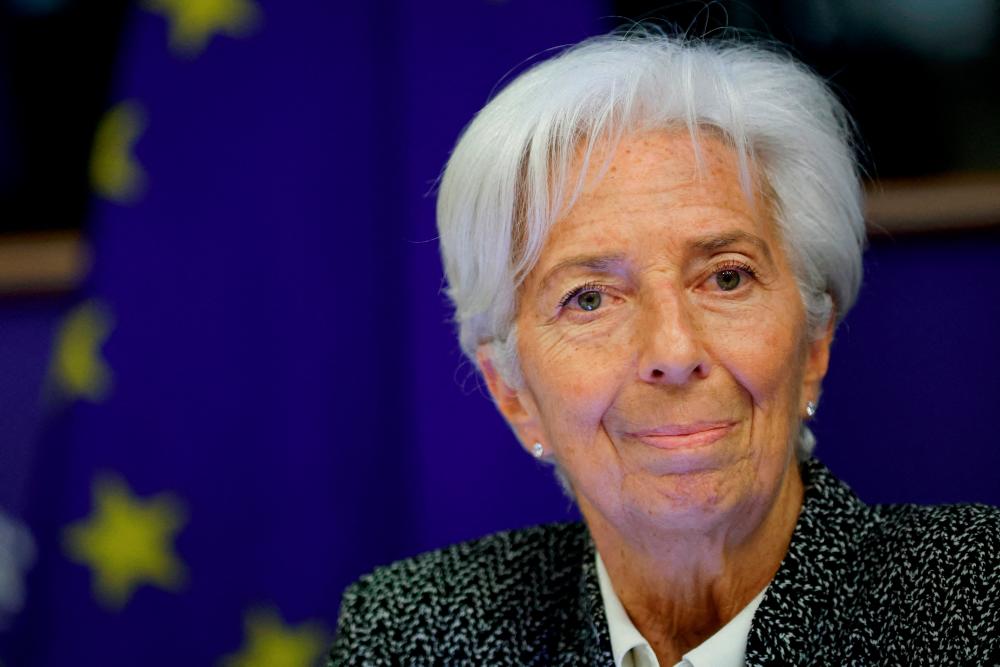FRANKFURT: The European Central Bank (ECB) is set to raise interest rates for a fourth straight time on Thursday (Dec 15), albeit probably by a smaller increment, and lay out plans to drain cash from the financial system as it fights runaway inflation.
The ECB has been raising rates at an unprecedented pace to rein in prices that are soaring across the 19 countries that use the euro, driven by surging fuel costs since Russia invaded Ukraine, and by the reopening of the economy after the Covid-19 pandemic.
The central bank for the eurozone raised the interest it pays on bank deposits from -0.5% to 1.5% in just three months, reversing a decade of ultra-easy money after being caught wrong-footed by the sudden rise in prices.
But this brisk tightening cycle was likely to slow down at the Dec 15 policy meeting as inflation showed signs of peaking and a recession loomed.
The ECB was seen raising interest rates by half a percentage point this week after two 75-basis-point increases in its two previous gatherings, mirroring the US Federal Reserve's own change of pace on Wednesday (Dec 14).
But like the Fed, the ECB was also expected to flag further hikes ahead to persuade investors that it is still serious about fighting inflation, which could stay above its 2% target through 2025.
“We think the (ECB’s Governing) Council will be at pains to stress that the downshift should not be confused with an imminent end to the hiking cycle,” analysts at BNP Paribas wrote in a note to clients.
Economists polled by Reuters expected the ECB to raise the rate it pays on bank deposits to 2% on Thursday before pushing it to 2.5% by March and 2.75% by June.
The ECB was also due to lay out plans to stop replacing maturing bonds in its €5 trillion (RM23.3 trillion) portfolio, reversing years of debt purchases that have turned the central bank into the biggest creditor of many eurozone governments.
The move, which mops up liquidity from the financial system, is designed to let long-term borrowing costs rise and follows a similar step by the Fed earlier this year.
The ECB will announce its policy decisions at 1315 GMT, followed by a news conference of president Christine Lagarde (pic) at 1345 GMT.
But Thursday’s discussion is likely to be heated after influential ECB board member Isabel Schnabel openly pushed back on the notion of smaller hikes advocated by chief economist Philip Lane.
This created the need for compromises around the path for rates and the pace of the ECB’s unwind of its bond portfolio – known in market parlance as quantitative tightening (QT).
“Horse-trading remains the essence of ECB policymaking,” Davide Oneglia, an economist at consultancy TS Lombard. “The counterpart of slower rate hikes will be hawkish guidance on the terminal rate ... accompanied by earlier or faster ‘passive’ QT.”
Some on the ECB's Governing Council, such as Bundesbank president Joachim Nagel, have called for QT to start by March or even earlier, while more dovish members are hoping for a later launch.
So far, the euro zone's economy has held up, with output even growing more than expected in the third quarter.
Overall, the ECB is seen letting €175 billion worth of debt expire next year, according to a Reuters poll, pointing to a €15-€20 billion monthly reduction depending on the start date.
Lagarde is expected to face questions about how far the ECB intends to raise rates and reduce its bond holdings - and about the interplay between both.
But investors expecting substantive answers may be disappointed.
“A key difficulty is that the ECB does not know how high it will have to go, reflecting huge uncertainty about both transmission and the inflation outlook,” Greg Fuzesi, an economist at JPMorgan, said. – Reuters









